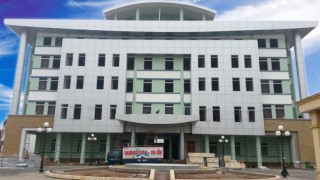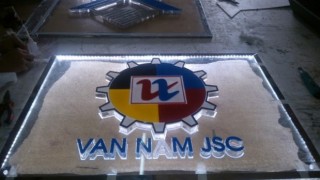Iterative Development Definition
- Danh mục: Software development
Iterative Development may follow an approach in which Timeboxes deliver horizontal slices of the solution, vertical slices or a combination of the two. For more tips, read our article on 25 essential project management skills. The Atlassian Community can help you and your team get more value out of Atlassian products and practices. The payback period is the length of time it takes for a new feature to generate the amount of money it costs to develop. When you’re in the product manager role, managing various threads of information and evaluating customers’ needs, it’s natural to make assumptions. You don’t always have the answers, so you have to make assumptions to make decisions, whether they work out or not.

At this stage, you’ll collect feedback and start your next iteration with planning. Remember that implementation and testing are sometimes repeated concurrently to guarantee no defects re-occurs. During this phase, you will iterative development definition construct your first iteration module’s technical architecture, database, and programmes. However, this phase will be repeated in the subsequent iteration, guaranteeing that risks are mitigated, and quality is maintained.
Testing
The person responsible for producing the product will naturally carry out his or her own assessments as part of that development activity. Simultaneously, a separate person (in most cases the Solution Tester) needs to prepare for the independent verification activity. This can be just as time-consuming as making the product (in some cases more time-consuming). The team may decide to focus early cycles on the functional perspective of a requirement – ensuring, and demonstrating, that the detail of the requirement is properly understood and agreed. This may be followed by cycles focussed on usability – ensuring interaction with the solution is effective and efficient.
In a waterfall method, a tiny requirement change causes a huge cost to rebuild and deliver. Tech companies prefer iterative processes because of their cost effectiveness. Rather than thinking about the project as a whole, thinking smaller parts at a time, helps the team to be more creative. Depending on the team you’re on and the type of projects you run, non-iterative processes can be challenging because they don’t build in time for your team to iterate and continuously improve. Because there are so many unknowns and surprises in engineering, engineering teams in particular tend to use iterative processes instead of non-iterative ones, but any team can benefit.
Examples of iterative in a Sentence
In this example, iteration 2 is focused on stabilizing the architecture, which is why we see the emphasis on the architecting activities. Iteration 3 is focused on completing the solution based on a relatively stable set of requirements and architecture, which is why there is an emphasis on development and testing. The iterative process doesn’t force you to develop primitive capabilities all the time. You have room to iterate features and create a better version of it. On the contrary, continuous improvement tends to optimize and delay resource usage as late as possible. Ultimately, every team can learn something from the iterative process.

Since every new iteration is an improved version of the previous iteration, it’s easy to maintain discrete versions of the software along with team accountability. Developers can also roll back to previous iterations with minimal losses if the current iteration fails. Iterative development simplifies the SDLC by breaking down the entire effort into smaller, more manageable chunks. Since the code is developed and tested in repeated iterations, it lets new features be added to the product and tested before implementation.
These cycles continue until an optimized version of the product is reached. Iterative software development doesn’t cling to one design or idea throughout the process. Iterative development permits teams to examine and modify their methods, resulting in ongoing improvement (Kaizen). After establishing all needs, analysis is performed to expedite the development process, such as identifying database models.
- In this figure, we can see that each discipline is addressed in every iteration.
- To achieve this we should (amongst other things) define a level of quality in the early lifecycle phases and then ensure that this is achieved.
- In a non-iterative process, you and your team would work together to come up with a final product without necessarily trying new ideas along the way.
- Prepare the requirement set and discuss value propositions of requests.
- You can think of an iterative process as a trial-and-error methodology that brings your project closer to its end goal.
- The agile methodology focused on processes that were more iterative and incremental in their approach, allowing you to obtain critical information much faster and make better decisions.
Continuous testing keeps root cause analysis to a minimum, preserving the bulk of a team’s resources for building new features. For this reason, programmers should be inspired to invest significantly into quality procedures because strong testing equals delivery speed. EDW team leaders should therefore set their sights on an aggressive QA effort—one that tests all modules and tests them continuously. The secret is knowing how much to test each object, a topic we will consider in a moment. In iterative development, feature code is designed, developed and tested in repeated cycles. These cycles or iterations (also known as sprints) give the concept its name.

Rather than adhering to a linear Waterfall method, software developers will react quickly to changes as their product evolves. They will build on previous versions to improve their product and repeat this process until the desired deliverables are achieved. Iterative and incremental development models are complementary in nature, which is why they are often used together to boost their efficacy and achieve project deliverables.
Of course, the number of architectural changes should reduce over time, but the point is that such changes are not an afterthought but are considered to be an essential aspect of the project lifecycle. In particular, system qualities are addressed early on in the project and not left until it is too late to ensure that they have been adequately addressed. Iterative development models evaluate and improve designs throughout the product development cycle. The development team starts to prepare the implementation of the first iteration after the planning phase. The iterative process is a feedback loop based on re-analyzing and improving the product according to new data or customer feedback. Most agile companies use continuous improvement and the iterative process together in tandem.


























